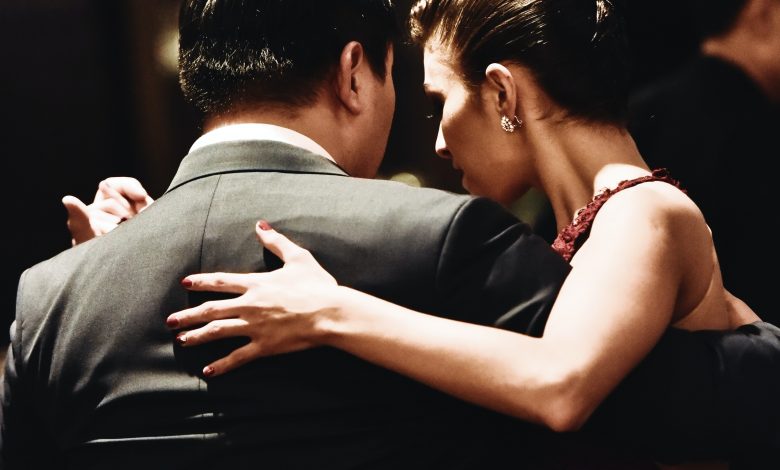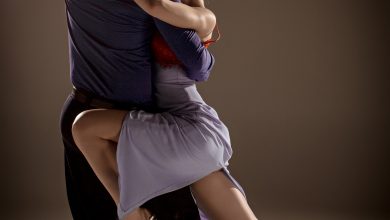The Grapevine

Another argentine tango figure is the Grapevine, also known as the Chain. The basic building block is a sequence of two Side Cross steps: the first one a Side Cross Front, the second a Side Cross Behind. Then try two more Side Cross steps, this time starting with a Side Cross Behind followed by a Side Cross Front. The pattern your feet make on the floor resembles a Grapevine or Chain.
This sequence of steps can be extended into a continuous Grapevine around the dance floor by curving your path. When dancing with a partner, when one of you is doing a Side Cross Front the other usually will do a Side Cross Behind. This is the choice of the leader. Advanced tango dancers can also do a Grapevine where both partners do Front and Behind Side Cross, they may instead do successive Fronts or successive Behinds.
Starting and Ending the Grapevine
Before you can do the Grapevine, the leader must turn from an orientation along the line of dance to one with the leader facing out and the follower facing in.
Grapevines and Ochos
It is also possible to combine Side Cross steps and Ochos because they are variations of each other. In a follower’s Forward Ocho, the follower pivots to her left to bring her into a Right Foot Outside position. Then she steps forward right and pivots to the right, forward left and pivots to her left. Compare that to a Side Cross Front. She steps side right and pivots to the right, crosses left in front and pivots to the left.
The Backward Ocho and the Side Cross Behind are also variations of one another. In the Backward Ocho the follower steps back right and pivots to the left, back left and pivots to the right. The Side Cross Behind steps side right and pivots to the left, crosses behind with the left foot and pivots to the right, matching the rules of the Backward Ocho.



